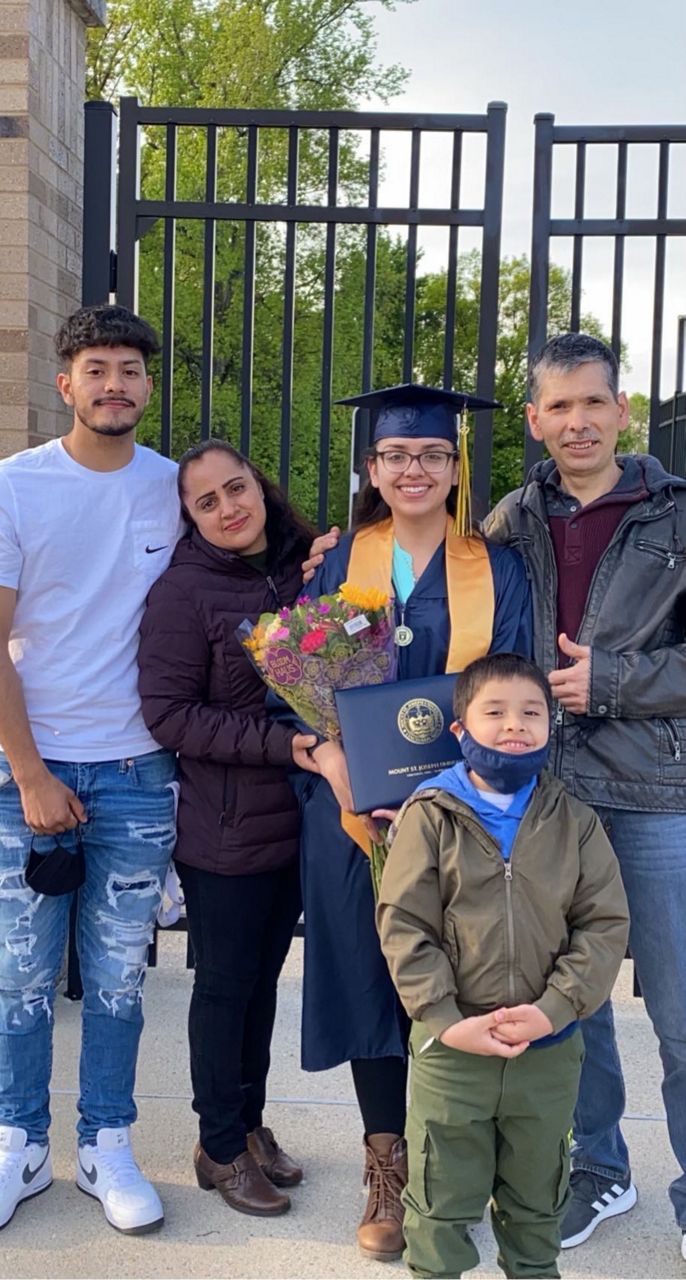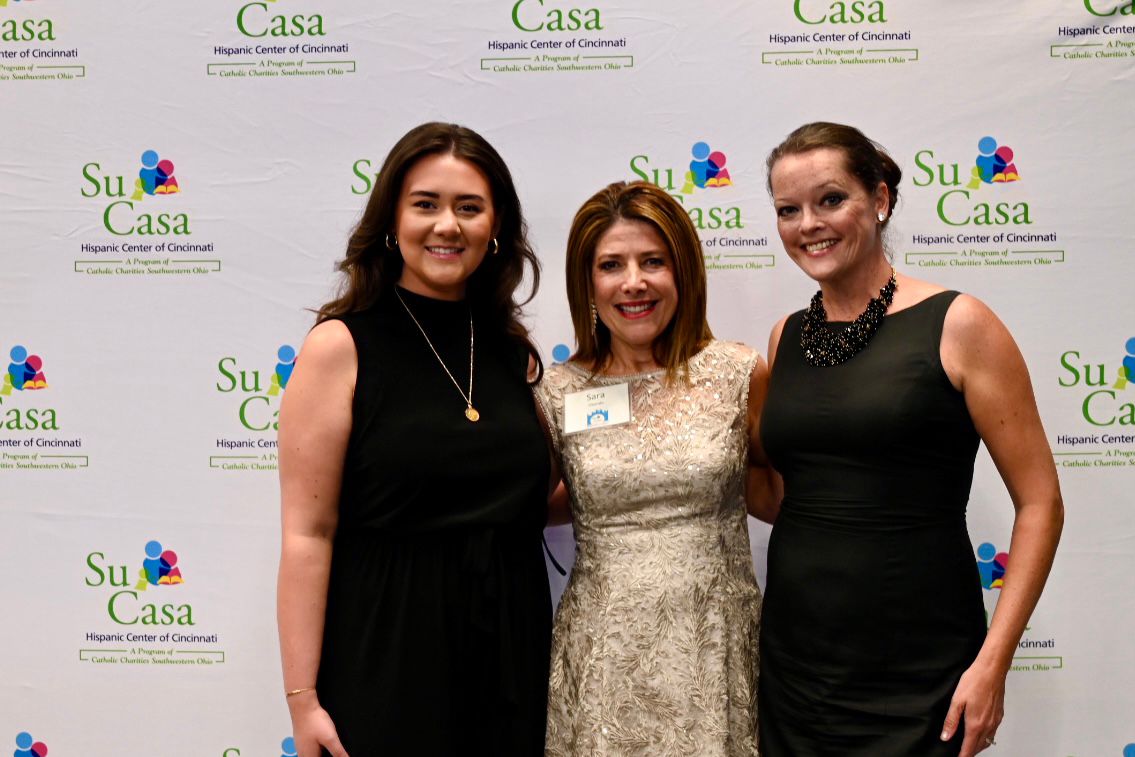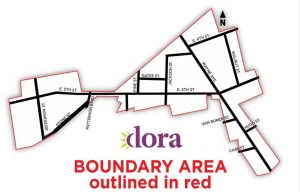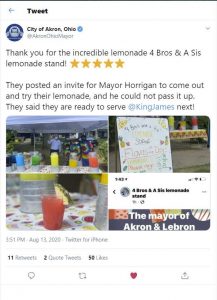CINCINNATI — Maria Villa and Jose Luna arrived in Cincinnati in the late 1990s from Mexico. With a child on the way, the young couple came to the United States in search of the American Dream.
What You Need To Know
- Founded in 1997, Su Casa Hispanic Center offers a range of services to greater Cincinnati’s growing Latino community.
- Su Casa offers educational support, access to health care assistance, help with social services and more
- Cincinnati’s Hispanic population is small, but it’s grown by nearly 50% in the past decade
- A key element of Su Casa’s work is making immigrants feel welcome
“They wanted us to have a better life than they had when they were younger,” said Jasmin Luna-Villa, 24, the couple’s firstborn. The family eventually grew to five in the years after their arrival with the birth of two sons.
Maria and Jose spoke some English when they arrived stateside. They also had family living in the area. Jose followed his brothers to Ohio, where they all worked in construction.
But despite being enthusiastic, life wasn’t always easy. Coming to a new country meant learning a new system — enrolling their kids in school, paying taxes, even how to make an appointment to see a doctor.
“It’s not just about learning a new language,” Luna-Villa said. “It’s really learning a new way of life.”

Jasmin Luna-Villa. (Photo courtesy of Su Casa Hispanic Center)
In search of support and guidance, Maria and Jose turned to Su Casa Hispanic Center — a then-fledgling program created as a ministry of the Catholic Church Saint Charles Borromeo. Catholic Charities of Southwestern Ohio took over operations in 2005.
For more than 25 years, Su Casa has provided a range of services to greater Cincinnati’s growing Latino community. Those include everything from educational support and access to health care to case management and help with social services.
Su Casa emphasizes helping the immigrant community become self-sufficient in their new country, according to Giovanna Alvarez, Su Casa’s longtime director.
Overall, Su Casa serves about 5,000 people every year.
“We want to be that community that welcomes them,” said Alvarez, who grew up in Peru. “The diversity and the inclusion of other people enriches our community. These people… want to be productive members of society — and it’s our mission to help them be just that.”
More than learning a new language
Alvarez has experienced some of these things firsthand. She spoke fluent English and had already earned a law degree by the time she moved to Florida. But she noted a need to adjust to some aspects of life, such as new formats for telephone numbers and home addresses.
For some, navigating more complex activities like knowing how to get insurance or getting a driver’s license can pose significant hurdles.
At their site on Reading Road, Su Casa staff will help clients by referring them to eligible services and create a plan for helping them find success.

Jasmin Luna-Villa (middle) poses with her parents and two brothers during graduation from Mount St. Joseph University. (Photo courtesy of Jasmin Villa-Luna)
“Even though you come with education and knowing the language, you’re still learning a unique system,” Alvarez said. “We’re here to help them get through those processes.”
When Catholic Charities founded Su Casa in 1997, Cincinnati’s Hispanic population was much smaller than it is today.
The number of local Hispanic people has grown nearly 50% over the past decade — jumping from 49,618 in 2010 to 73,707 by 2020, according to the most recent census data. The population is growing faster in Cincinnati than in any other city in the state of Ohio.
Still, Hispanics only make up about 3.3% of the region’s overall population.
“When my parents first arrived here, whenever my mom would see somebody else who was Hispanic, she’d get excited,” Luna-Villa said with a chuckle. “We mostly had only our family to rely on.”
That was hard for Luna-Villa when she was younger. When she started school around the age of 6, she didn’t really know anyone.
“I didn’t have any cousins or anyone to go to school with me, so I was basically on my own,” she said.
Su Casa became an escape to Luna-Villa’s family. The organization’s original home at St. Charles Borromeo (also known as San Carlos) Church wasn’t far from where Luna-Villa grew up. Her family went there for Mass on Sundays.
The now-shuttered Catholic church was in Cincinnati’s Carthage neighborhood, a diverse area with many Hispanic residents about 10 miles north of downtown Cincinnati.
Luna-Villa and her mother would make the long walk because her father usually had the family car working long hours, she added.
Maria would frequent Su Casa often for services like translation of documents. She was also a regular at Zumba, one of the several fitness classes Su Casa offers.
“They also had a computer lab, so she would take me and my brother there sometimes to do our homework,” Luna-Villa recalled.
Educational programming provided through Su Casa include English for Speakers of Other Languages (ESOL) classes, school-based tutoring and translation services.
Villa-Luna made the decision to become a teacher after volunteering through Su Casa’s summer education program, Vacaciones Útiles. It’s an eight-week summer program for low-income Hispanic/Latino children in first through fifth grades. The program’s name translates to “useful vacations.”
The Mount St. Joseph University grad teaches preschool at Holy Family School in East Price Hill.
“[Su Casa] kind of helped me find my calling,” she said. “I’m appreciative of the opportunity to give back.”
Mi casa es Su Casa
Besides offering social services, Su Casa also tries to help the local Latin American community through other quality-of-life resources. They include hosting events that help them “share and express” their respective cultures with pride.
“People go where they feel welcomed and included,” said Bryan Wright, executive director of Cincinnati Compass. The organization works to advance economic and cultural inclusion of immigrants and refugees.
“Su Casa helps to ensure that Hispanic/Latino community members feel a sense of belonging, which in turn helps enhance the vibrancy of their neighborhoods and the Cincinnati region,” he added.
In past years, the local Hispanic/Latino population has seen its purchasing power grow to more than $1.2 billion, according to data from the Cincinnati USA Regional Chamber. They’ve also seen unemployment rates steadily decline. Nearly 30% of the community has a bachelor’s degree or higher, Wright said.
“Yet, while there are many successes within the community, there are many needs and challenges to address because of systemic inequities,” Wright said.

A photo taken during the Su Casa Hispanic Center of Cincinnati. (Photo courtesy of Su Casa Hispanic Center of Cincinnati)
Hispanic/Latino communities face ongoing barriers related to accessing mental health, better employment opportunities and affordable housing, Wright said.
Su Casa has established itself as a “dedicated and trusted professional team throughout the Hispanic and Latino community,” he said. That’s important because it often works with vulnerable populations that may have had bad experiences with local authorities.
Some of the program’s services support those with Refugee Status, such as its language program and health fairs. Su Casa is also involved in the Trafficking Victims Assistance Program, which provides case management for victims of human trafficking.
The organization also serves as the regional lead on the family reunification process sponsored by the United States Conference of Catholic Bishops. Through those efforts, Su Casa works to reunite unaccompanied children in immigration proceedings who’ve been separated by migration.
Su Casa is the only provider of those services within a 200-mile radius. It has cases as far away as Columbus, Ohio.
Su Casa helps coordinate the Metropolitan Area Religious Coalition of Cincinnati’s ID card program. The card provides informal documentation to immigrants, along with people released from prison or experiencing homelessness.
While the card can’t be used to vote and isn’t a replacement for a driver’s license or a state ID, it does allow holders access to city services such as health clinics and is recognized by the Cincinnati Police Department.
“Su Casa ensures each community member is treated with dignity and respect,” Wright said. “Su Casa supports the most vulnerable so that they have access to resources to be able to live their full lives safely and with dignity.”




